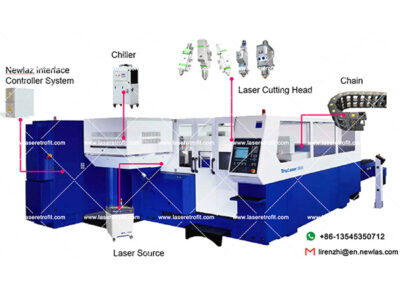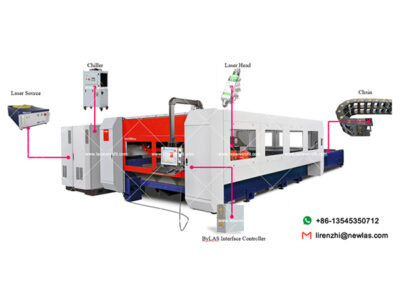Laser cutting of mild steel and stainless steel has a long history and has been one of the primary applications for CO2 lasers. However, it’s difficult to cut reflective metals for CO2 lasers.

Why is CO2 laser cutting reflective metals so difficult ?
- Their low absorption of infrared laser light makes these metals challenging to cut.
- Copper and brass (copper-zinc alloy) are good reflectors (and therefore poor absorbers) of the infrared (IR) laser light, especially in their solid state.
- Pure copper reflects > 95% of near-IR radiation (~ 1 µm wavelength) in its solid state.
- The reflectivity of copper and other reflective metals decrease when the metal warms up, and drops sharply once the material melts (e.g. down to <70% for copper in its molten state) as seen in figure below. These metals absorb significantly more laser energy in molten state.
Problems in cutting reflective metal by CO2 laser
When cutting with CO2 laser, the surface causes the beam to deflect back up the nozzle, potentially blowing the lens and causing further damage to the bellows and mirrors.
It’s not just the nature of the metals that can cause damage. Due to CO2 laser cutting machines utilising beams of light and mirrors to produce a cut, the actual delivery system of the laser becomes an issue also. The reflection of the beam back up the lens causes major damage to the internal mirrors.
The resulting damage not only takes time to repair, meaning that the production of your components is halted, causing significant downtime, but this also costs a significant amount of investment to fix, with repair bills in excess of 5800USD.
Can reflective metals be cut ?
While reflective metals do bring a host of problems with them, they can be cut.
Fiber lasers have an emission wavelength of around 1.07 µm, compared to 10.6 µm for traditional CO2 alternatives. Not only is the 1.07 µm laser light reflected less, and therefore absorbed more easily, but the shorter wavelength can be focused into a spot that is around 1/10th of the diameter of a CO2 beam. This provides a dramatically higher power density, making metal penetration easier. At such high power density levels, metals such as copper and brass quickly go through a phase change into molten state, therefore the laser beam rapidly overcomes the reflectivity barrier of such metals to initiate an efficient cutting process.
Solutions
Of course, we won’t suggest you buy a new fiber laser cutter, after all, it is a large expense.
Newlaz has has continually improved our technology, systems to retrofit CO2 laser to fiber laser cutters(including Bystronic retorfit and Trumpf retrofit) This method of cutting reflective metals is also the fastest and most cost-effective alternative to traditional CO2 laser.
You don’t need to change machine tool structure, drive system, operating method, CNC system, just upgrading parts of components in shorts times, such as cutting head, laser source, chiller, etc. Expense is much less than buying a new machine.
Well, we currently hold the ISO 9001:2015 quality accreditation, this means our customers can be assured that we have the quality systems in place to ensure that our products can meet higher standards.
Below is technical data after retrofitting CO2 laser for your reference.

Don’t hesitate, just contact Newlaz right now.






